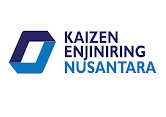Color Theory and Design Layout: Using Color Psychology to Enhance Your Designs
Color Theory and Design Layout: Using Color Psychology to Enhance Your Designs
Color is an essential element in design, as it can evoke emotions, convey meaning, and influence the audience's perception. Understanding color theory and color psychology can help designers make informed decisions when choosing colors for their designs. In this article, we will explore the basics of color theory and how to use color psychology to enhance design layouts.
Info Penting : Pembahasaan Tuntas PBG
Understanding Color Theory
Color theory is the study of how colors interact with each other and how they can be combined to create visually appealing and harmonious designs. The three primary colors are red, blue, and yellow, and they can be combined to create secondary colors, such as orange, green, and purple. Tertiary colors are created by combining primary and secondary colors.
Baca Juga : Penjelasan Tuntas Mengenai SLF
The color wheel is a visual representation of color theory, and it is used to create color schemes that are aesthetically pleasing. The color wheel consists of twelve colors, with primary, secondary, and tertiary colors evenly spaced around the wheel.
Info Penting : Konsultan SLF Jakarta
Using Color Psychology
Color psychology is the study of how colors can affect human behavior and emotions. Colors can evoke different emotions and associations, and designers can use this knowledge to influence the audience's perception of the design. Here are some common associations with different colors:
Red: Passion, energy, love, danger
Orange: Warmth, enthusiasm, creativity
Yellow: Happiness, optimism, attention-grabbing
Green: Nature, growth, balance
Blue: Trust, calmness, professionalism
Purple: Royalty, luxury, creativity
Pink: Femininity, romance, sweetness
Black: Elegance, sophistication, power
White: Purity, innocence, cleanliness
Using Color Schemes
Info Penting : Jasa Audit Struktur Bangunan Terbaik
A color scheme is a set of colors that work well together to create a visually appealing and harmonious design. There are several types of color schemes that designers can use:
Monochromatic: Uses different shades of a single color.
Analogous: Uses colors that are adjacent to each other on the color wheel.
Complementary: Uses colors that are opposite to each other on the color wheel.
Triadic: Uses three colors that are evenly spaced on the color wheel.
Tetradic: Uses four colors that are two pairs of complementary colors.
Applying Color Psychology to Design Layouts
When designing a layout, it is important to consider the intended emotion or message that the design should convey. Here are some tips for using color psychology to enhance design layouts:
Use color to highlight important information or elements in the design.
Use contrasting colors to create visual interest and grab the audience's attention.
Use analogous or monochromatic color schemes for a calming and harmonious design.
Use complementary or triadic color schemes for a bold and dynamic design.
Use color to create a mood or atmosphere that fits the design's message or purpose
Baca Juga : Contoh Kegiatan Audit Struktur Di Bali
Conclusion
Color is an essential element in design, and understanding color theory and color psychology can help designers make informed decisions when choosing colors for their designs. By using the right colors and color schemes, designers can evoke emotions, convey meaning, and influence the audience's perception of the design. Remember to consider the intended emotion or message when choosing colors and use color to highlight important information or elements in the design.
Baca Juga : Audit Struktur Bangunan, Mengapa Perlu Audit Struktur?
Kunjungi Website Ini : https://maestrokontraktor.com/
.jpg)






Komentar
Posting Komentar